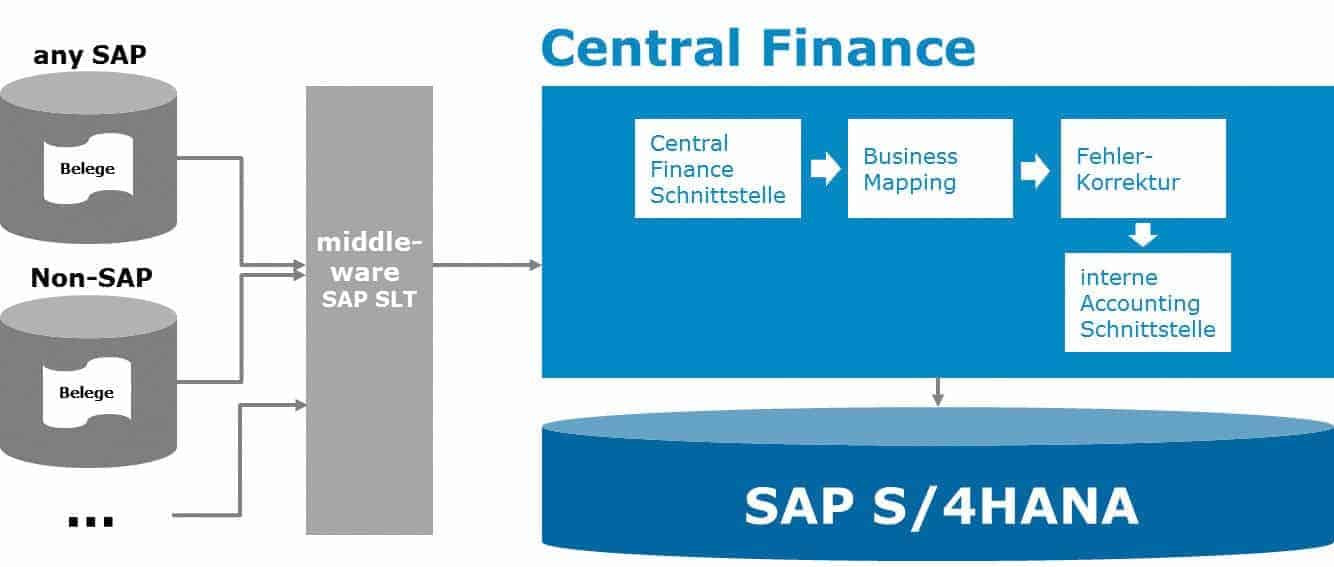Digital Transformation with S/4 Hana
![[shutterstock:126777992, Peshkova]](https://e3mag.com/wp-content/uploads/2016/12/Trans.jpg)

We are currently experiencing a profound change, the digital transformation in a global world. The transformation does not stop at any sector of the economy. Driven by a bundle of new technologies, companies are putting their entire business processes and models to the test in order to proactively shape this change, but usually without having concrete and tangible goals in mind. Only one thing is certain for companies: growth and survival on the market have the highest priority. The technical possibilities allow every freedom to invent new business models. S/4 Hana plays a central role in this, as the universal ERP platform for the transformation process. SAP is setting a rapid rotation speed with which it is driving and expanding this platform in a trend-setting manner.
S/4 Maturity
Digitization, mobilization, datafication, automation, augmentation, platformization, virtualization - digital transformation is a process. We are creating our own awareness of the future and the ways to get there: a core statement by futurist Gerd Leonhard at this year's DSAG annual conference on current developments. One thing is certain: we can no longer escape the pull into the digital age. Despite the still unresolved doubts about the product maturity of S/4 Hana - let's just take a look at the more than 200-page list of exclusions and special features that accompanies the product (known as the "Simplification List") - 62 percent of SAP users are nevertheless convinced, according to the PAC study (S/4 Hana Relevance for German Companies 2015), that S/4 Hana is of strategic importance and that a switch is unavoidable. SAP is also giving this assessment appropriate emphasis by taking the precaution of discontinuing maintenance for the predecessor releases in 2025. Further developments beyond legal requirements are therefore no longer to be expected. Exactly this attitude can now also be felt on the market.
Interestingly, it is also a fact that S/4 Hana is no longer thought of without the Internet of Things (IoT). The days of introducing a monolithically conceived ERP system are finally a thing of the past. Instead, it is about connecting the differentiated development paths into the S/4 Hana platform with the development paths into the digital world. In many companies, the self-confidence is still on shaky ground to confidently define a multi-year roadmap into the digital world. Thus, "complexity experts" are desperately sought on the market. The SAP (S/4) Hana service providers who recognized this interlinked development early on and are also able to accompany their customers in a visionary manner on a sustainable path into the digital future have a good starting position into the "brave new world". Consequently, they start with the customer's own E2E processes and - enriched with knowledge of the respective potential benefits from the new technological land of milk and honey - offer pragmatic, company-specific visions of the future. This is exactly what the market needs now.
Tendentially, the first S/4 Hana experiences lead to the hypothesis: The clear target definition and positioning in the IoT world is an essential guarantor for a holistic S/4 Hana roadmap and the successful SAP S/4 Hana implementation. Success is defined by the targeted use of the diverse possibilities and the mastery of them. The technical possibilities make it possible to think completely end-to-end or even completely transform processes across system boundaries. The Internet of Things (IoT) and S/4 Hana interact directly with each other, so new process models in the IoT world can massively change the process and reporting worlds in the classic ERP world. The processing of data from the Internet, e.g., via SAP HCP and HCI, the business warehouse embedded in S/4 Hana, as well as simple access to the Predictive Analytics Library named here as an example, enable simple mass data processing, predictions, and simulations, which in turn have a process-changing effect in the ERP system. The more one wants to exploit the potential benefits of this kind, the greater the harmonization part of the project. And the clearer the clarity and agreement about where the company wants to go, the clearer it is possible to define how the new S/4 Hana capabilities should be designed. 
What impact does the realization of the interdependence of S/4 Hana and the IoT world have on an S/4 Hana roadmap? What do the individual project phases look like in an S/4 Hana implementation and what is the relationship between technical migration and process harmonization? The greater and more far-reaching the companies' desire for harmonization and the more complex the project requirements, the more comprehensive the project requirement and argues for risk-clustered follow-up projects in the roadmap. A trend among DAX-listed companies is the separation of the technical upgrade from the organizational change as well as process and value flow harmonization. The design of the future process house is usually accompanied by an analysis of which linked technologies will be used in the IoT landscape in the future. So how does S/4 Hana position itself in the on-premise or cloud world? The S/4 Hana landscape offers a varied, multi-track process landscape both in the digital on-premise core and in the cloud solution landscape (including the combinatorics of the same) - both paths are conceivable. It is precisely this variation in technical components and processes as companies search for the golden path that is currently one of the most glaring expense drivers in S/4 Hana projects. The perception of complexity is currently an obstacle to starting an S/4 Hana project that should not be underestimated. According to the PAC study cited, 78 percent of respondents consider the effort involved to be difficult to estimate.
S/4 roadmap - alternative courses of action
If until the release of the S/4 Hana Enterprise Management version in November 2015 the market still reacted wait-and-see to the new product S4, there is now a lot of movement discernible. Gerd Leonhard simply stated at the DSAG Annual Conference 2016: Transformation - first very slowly and then very quickly. In view of the uncertainty of the companies about the S/4 Hana product maturity, the complexity of the S/4 Hana technology and depending on the expected benefits, two preferred process models are emerging among the companies per company size: DAX-listed companies are lining their roadmap with targeted Proof of Concepts (PoC) in order to gradually move closer to their own future prospects. Many large programs are currently being developed that are putting the company's own application and process landscape to the test. The focus is often on specific questions: How can the complex application landscape be simplified while minimizing risk? Which process adaptations are required for future business models and increase the company's effectiveness? Which data basis is required with which data granularity in order to be able to evaluate centrally and control proactively? The central element here is the SAP Central Finance component, which prepares a simpler system landscape without affecting existing systems from the legacy landscape. Extensive financial information at individual document and item level can be evaluated in real time via a single instance and made available to a universal reporting data model. In parallel, organizational standardization can be implemented, a common business and IT view of the future S/4 Hana project can be developed, and the project goals can be defined and verified via proof of concept and business case, including a reliable target operating model with the prospect of replacing the source systems with S/4 Hana in the medium term.
Medium-sized companies, on the other hand, usually driven by clear growth targets, are increasingly venturing the direct step into implementation - the pressure to meet the growth requirements of globalized markets in a timely manner is too great. Clearly defined organizational models and core processes as well as a flexibly expandable application landscape form the boundary conditions for the projects. SAP's approach of moving away from the classic implementation model of Design - Build - Operate, which previously placed a great deal of emphasis on the definition of the concept, fits in with this. Motivated, midsize companies are adopting the new SAP Activate agile process model to save time and money. The idea of the model is to make a fit-gap analysis starting from mature best practices, on the basis of which solution approaches are then developed in small, short-term and iterative steps in manageable project teams and combined into an overall model. The greatest challenge here is the maturity of the best practices. Good for customers whose core and key processes are part of the best practices. The first S/4 Hana experiences nourish the hypothesis: Implementation quality, costs and time in an S/4 Hana project depend on the fit/gap of the Best Practices and the customer's own process requirements. Process gaps in the best practices can lead to task forces leveraging the agile and iterative process model in parts to define a possible solution model. Time-intensive customer-owned solution approaches need to be defined. The existing SAP solution elements in different components and third-party solutions must be compared with each other, concepts defined and prototypes created, which in turn must find their way into the overall concept. Tightly defined schedules then reach their limits. In addition to time and money, this also costs trust in the new SAP concept. With solution components excluded from SAP standards by the Simplification List, the path to an alternative solution concept is hardly any different. The fact is, SAP Activate is a modern and functioning solution model as long as standards can be used and no demands are made on the flexibility of the solution offerings.
Conclusion
The path to the digital world runs via S/4 Hana as a strategic backbone for new business processes. The paths to realization still suffer from the incompleteness of the product. But surely not for much longer.





